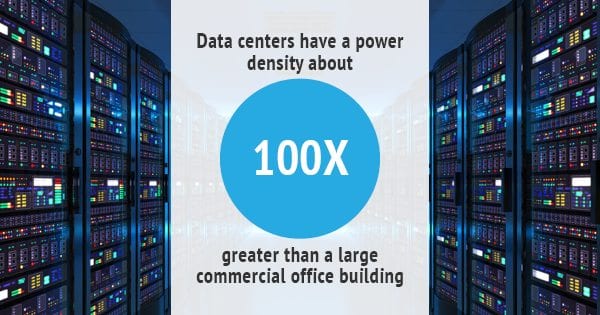
Most businesses use a data center that helps power their work, though they may not realize that’s where their storage is coming from. With the increased flow of information being processed, disseminated, and stored, most businesses need expanded server power and technology to keep things running smoothly. Data centers are spaces full of networked computers and storage systems that others use to organize, store, process, and share data on a large scale. However, data centers need a form of organization too, and data racks play an important role in cable management, keeping servers and electronics from overheating or getting too cold, and managing airflow. So let’s talk about what data centers need for maximum efficiency and management as the need to process ever-growing amounts of information increases.
What’s the Need for Data Centers?
Everyone knows that backing up and saving your work is important. We’ve probably all had that moment when you close out of a program without saving and all your hard work is gone in the blink of an eye. When it comes to big business, backing up and saving your work becomes even more important. Software changes, procedures, important storage of information, and so much more can be impacted if there’s a power outage, natural disaster, or other complication. Data centers provide a way to backup vast amounts of information to the center, with a bigger bandwith and the expertise of IT engineers and maintenance. Data centers are also put in key areas of the world that aren’t prone to natural disasters, ensuring that the data centers are low risk.
Besides this, data centers offer us a seemingly limitless vault to store information, process it, and secure networks, security features, and much more. Our technology driven twenty-first century lifestyle would be hard-pressed to run as smoothly as it does without the help of data centers.
Data centers have a power density about 100 times greater than a large commercial office building; its equivalent is about nine Wal-Mart sized shopping malls. And, interestingly, data centers that are older than seven years are technically considered out of date, according to Green Computing. The average life span of a data center is around nine years, thanks to the quickly changing technology.
How Do IT Racks and Data Racks Help?
A data center needs to be carefully organized and maintained to avoid disturbances, breaches, or other complications. Data racks, server racks, and IT racks all help organize the equipment, wires, and switches needed to run the data center appropriately. A smart use of data racks and other types of racks will help conserve space, allowing you to maximize your center, and preserve your resources, letting a little go a long way.
There are different types of server racks and data racks available that may have other protective or useful functions. Some of these include cooling mechanisms to keep devices from overheating, power protection, easy movement, cable and device management, and greater security, both internally and externally.
These racks are all standardized according to the Electronics Industry Alliance’s specifications.
What are the Advantages of Using Hot and Cold Aisle Containment?
When designing a data center, one thing to keep in mind is how to manage air flow to your advantage. Using hot aisle/cold aisle containment is one layout for server racks or other equipment that lets a data center work more efficiently. Ideally, this type of layout reduces the amount of energy needed and cuts down on cooling costs.
In this type of layout, server racks alternate between having one row of cold air intakes facing one way and hot air exhausts going the other. Rows of racks that have cold air intakes all facing the same way are known as cold aisles and face air conditioner output ducts. Rows with hot air exhausts are the hot aisles and face air conditioner return ducts.
A good deal of planning needs to go into the creation of a data center and there are ways to maximize efficiency, energy usage, and costs with the right kind of organization and foresight.
